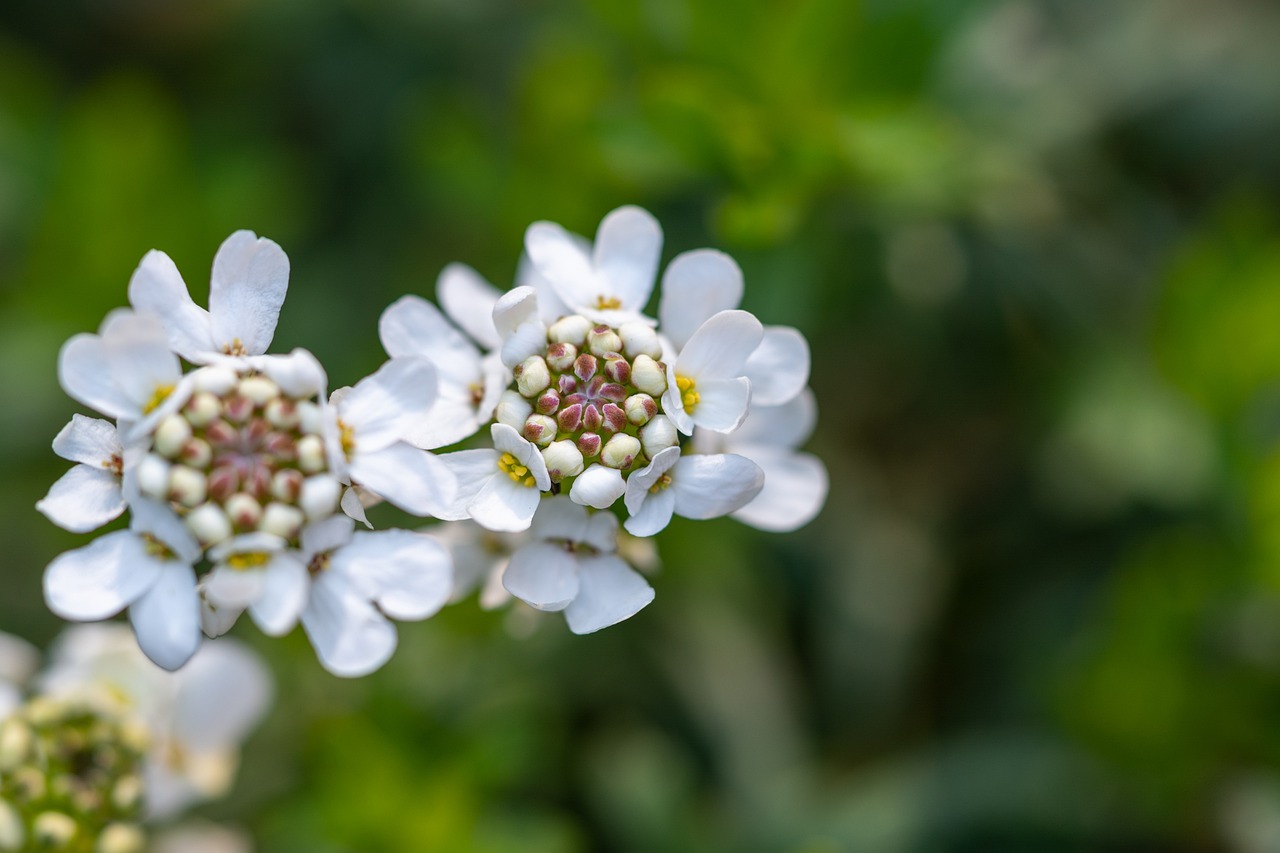Iberis | A White Floral Array Weaving the Colors of Southern European Gardens

Iberis is a gardening plant characterized by its pure white blossoms, which bloom profusely from spring to early summer. Because of its spreading, ground-covering nature, it is highly valued for edging flower beds and borders.
In this article, I will introduce the essential information about Iberis, its cultural background, and practical gardening tips.
Basic Information
- Scientific name: Iberis sempervirens
- Family: Brassicaceae
- Origin: Southern Europe, particularly Spain and the Mediterranean coast
- Appearance: Iberis produces clusters of small white flowers that create a snow-like effect. Its height is about 20–30 cm, with a low and spreading growth habit, making it suitable for ground cover and rock gardens. The dark green leaves provide a striking contrast to the blossoms.
- Blooming season: From April to June, Iberis continues to provide visual appeal even after flowering, as its foliage remains attractive.
Cultural Significance Around the World

Iberis is especially cherished in the Mediterranean region, where it adorns gardens and stone walls.
In Spain, it is regarded as a symbol of “Mediterranean beauty” and is commonly found in gardens in warm climates.
In the United Kingdom, Iberis has long been a staple in rock gardens and border plantings, used to create harmony and vivid spring landscapes.
The white flowers of Iberis are often seen as symbols of “purity” and “perfection,” bringing an elegant impression to garden designs.
Historical Background
The name “Iberis” derives from “Iberia,” the ancient name for Spain, which is the plant’s native region.
During the Roman era, Iberis was widely cultivated along the Mediterranean coast, often used in decorative gardens and public spaces.
In the Middle Ages, it was frequently grown in European monasteries, decorating stone buildings and cloister gardens.
Its hardiness and ease of care made it a favorite among gardeners throughout history.
Gardening Advice

Iberis prefers sunny locations but also grows well in partial shade. Well-drained soil is ideal, as the plant dislikes overly moist conditions.
In the garden, it is perfect for edging borders or spreading across rock gardens.
Watering is needed only when the soil surface becomes dry. Keeping it slightly on the dry side prevents overwatering.
After flowering, light pruning helps maintain its shape and ensures abundant blooms the following year.
Iberis is relatively cold-tolerant, keeping its foliage even in winter and adding greenery to the garden.
Planting in spring or autumn ensures good root establishment and healthy growth. It also thrives in containers, making it a versatile choice for various gardening settings.
Conclusion
Iberis, with its pure white blossoms and long-lasting beauty, is an excellent plant for brightening up gardens. Easy to care for and beginner-friendly, it also serves well as ground cover.
I encourage you to introduce Iberis to your garden or balcony and enjoy the arrival of spring with its elegant charm.




